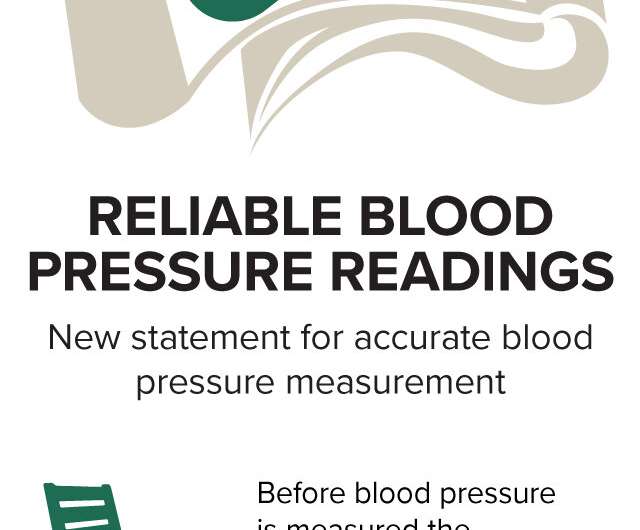Half of U.S. adults should monitor blood pressure at home

It is well-known that blood pressure measured in the doctor's office does not reflect a person's regular blood pressure levels.
For this reason, about half of American adults are recommended to have their blood pressure measured outside of a clinical setting, according to a new study led by Paul Muntner, Ph.D., professor of epidemiology in the School of Public Health at the University of Alabama at Birmingham. The study found that approximately 104 million Americans should routinely use a blood pressure machine at home to provide backup for—or a contrast with—the results from their visit to the doctor's office.
According to the study, nearly 93 percent of in adults the United States who have high blood pressure when measured in their doctor's office and do not take blood pressure medicine should be screened for "white coat hypertension," a condition where blood pressure spikes when measured at the doctor's office, but is normal when measured outside of a medical setting. If someone has white coat hypertension, they may not benefit from starting antihypertensive medication.
Researchers also discovered that a third of U.S. adults should be screened for "masked hypertension," which occurs when individuals do not have high blood pressure based on readings measured in their doctor's office but do have high blood pressure readings when measured outside of the clinic.
"For some people, a doctor's office is a place they're relaxed," Muntner said. "They are away from job stress, traffic and family issues. Others get anxious they are about to get bad news about their blood pressure—or something worse. Their readings in the doctor's office cause concern, whereas measuring in a more familiar setting would cause less stress."
Under the American College of Cardiology and American Heart Association guidelines, people are considered to have high blood pressure if their systolic, or top number, is 130 or higher and their diastolic, or bottom number, is 80 or higher.
In order to ensure people are accurately diagnosed with hypertension, Muntner says, at-home monitoring should be used. While it may seem expensive or tedious to take one's blood pressure at home, it does not have to be.
Many pharmacies or grocery stores have blood pressure machines customers may use free. Home versions with an electronic inflatable cuff are also available at local drug stores for less than $50.
"The most important thing is to make sure the device has been validated," Muntner said. "You should also talk to a doctor or a nurse about buying a device and have them teach you how to accurately measure your blood pressure at home."
Muntner says you should take your blood pressure two times in the morning and two times in the evening for a week at a time. It is best to use a device that records the readings so you do not have to write the results down, and your doctor can see the data at your next appointment.
Ultimately, the most important objective of having people measure their blood pressure at home is to make sure doctors are treating people appropriately.
"Home blood pressure monitoring will better inform the physicians, as well as the patients," Muntner explained. "That means physicians aren't starting a patient on medication when they may not have high blood pressure. It also ensures doctors are starting treatment on patients who do have hypertension or are at risk for cardiovascular disease."
The study was published in Hypertension, the journal of the American Heart Association.
More information: John N. Booth et al. Proportion of US Adults Recommended Out-of-Clinic Blood Pressure Monitoring According to the 2017 Hypertension Clinical Practice Guidelines, Hypertension (2019). DOI: 10.1161/HYPERTENSIONAHA.119.12775



















